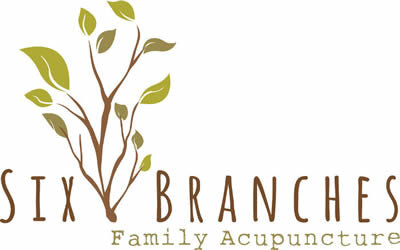ACUPUNCTURE FOR pain
Acupuncture is probably best known for its effectiveness in relieving pain. The World Health Organization states “Because of the side-effects of long-term drug therapy for pain and the risks of dependence, acupuncture analgesia can be regarded as the method of choice for treating many chronically painful conditions.”
Find relief with acupuncture for:
Muscle Pain (back pain, shoulder pain, neck pain, hip pain, leg pain)
Joint Pain (ankle pain, knee pain, hip pain shoulder pain)
Sports Injuries
Arthritis
Headaches / Migraines
Fibromyalgia
ACUPUNCTURE FOR BACK PAIN OR SCIATICA
Back pain can develop for a number of reasons. At Six Branches Family Acupuncture, we will take a complete health history, perform range of motion testing, and refer out for imaging as necessary. We will use acupuncture and manual therapies like massage or cupping to address your pain. We will also give you lifestyle recommendations to help your pain decrease faster. You should see some reduction in pain in the first visit as we kick-start your healing process. Length of treatment will depend on the nature of the pain, how long you’ve had the pain, and other lifestyle factors.
ACUPUNCTURE FOR MIGRAINE HEADACHES
We have worked with many people at eliminating chronic headaches, and especially migraine headaches. We will take a complete health history, including tongue and pulse diagnostics, and discuss dietary and other lifestyle factors with you. Acupuncture and herbal medicine are very helpful for providing pain relief as well as addressing the root causes of your headaches.
HOW DOES ACUPUNCTURE WORK?
Whether your pain is in your neck, hip, ankle, or stomach, here are a few things you should know about acupuncture for pain relief.
Acupuncture stimulates the body’s own endorphins (enkephalin, β-endorphin and endomorphin) which act on the body’s opioid receptors to relieve pain. Studies have also shown that acupuncture needles stimulate the release of adenosine, another painkiller. Over time, acupuncture also works to re-train the brain to handle chronic pain differently.
Acupuncture helps your body to heal itself, and it helps you live with less pain during the healing process. Healing takes time and every body heals on its own timeline. Many factors affect the speed of recovery including the overall health and strength of the body, posture at work, repetitive stress, and dietary factors.
The frequency of acupuncture treatment is like the dosage. More frequent treatment in the beginning is recommended to kickstart the healing process.
You should get some relief in the first session, but the pain may not go away immediately. Or, you may feel great after your acupuncture appointment but a few hours later the pain may come back to some degree. Sometimes the pain may come back quickly, but then the next day it starts to improve. Sometimes the area of pain may feel better, but then you feel more pain on the other side of the body. This is all a part of the healing process. If you’re seeing any change at all, your body is healing and you are on the road to recovery.
Frequent acupuncture treatments for pain have a cumulative effect. As the length of pain relief grows, treatments can become less frequent.
Once the pain seems to be gone, it is important to get acupuncture a few more times as maintenance, to ensure that your relief lasts as long as possible.
Acupuncture for pain relief really works very well. If it isn’t working for you, you may have a structural issue that is keeping the healing process from happening, you may need to do some strengthening exercises, or you may be re-injuring yourself without realizing it (repetitive stress). Six Branches Family Acupuncture should be able to help you pinpoint these reasons so you can address them.

